& Construction

Integrated BIM tools, including Revit, AutoCAD, and Civil 3D
& Manufacturing

Professional CAD/CAM tools built on Inventor and AutoCAD
10 min read
An extensive guide to how radio waves work, including frequency modulation, antennas, transmitters, and receivers.
Can you count how many devices you use every day thanks to radio waves? It can be a bit overwhelming to think about just how impacted our lives are by this technology. From smartphones to laptops, GPS to baby monitors, and more, we’ve come to harness this form of electromagnetic energy to create some amazing things. But while we use these devices each and every day, do we truly understand how radio waves work?
Hopefully, this article will help you understand the foundations of how radio waves work and dispel some mysteries along the way.
Before even diving into any of the science surrounding radio waves, we have to give this subject some justice by showing just how much radio waves have affected our everyday lives. Let’s start with an average day, and perhaps you wake up to the not-so-soothing sound of an alarm clock thanks to your smartphone. You can thank radio waves for the early morning jolt.
As you sit down for your morning breakfast, maybe you turn on the radio or television to listen to what’s happening out in the world. How are these bits of audio and video information getting to you? With radio waves yet again. As you get ready to leave for work, maybe you like to check the traffic and plan the most efficient route, so you use the GPS on your car’s dashboard. More radio waves.
During your morning commute, you might like to tune into your favorite morning talk show. The radio station that you plug into is one of many specific radio wave frequencies being transmitted at all hours of the day. When you get to work, maybe you’ll plop down in front of a computer and connect to the World Wide Web, wirelessly. You load up your Google docs, websites, and email, all using radio waves to connect wirelessly to the internet through WiFi.
You see, radio waves are used in many more things than the square boxes that we use to play music and listen to talk shows. Modern wireless communication builds off of simple design inside the conventional radio, allowing us to connect humanity all around the world with information, video, audio, data, and a whole lot more. But for how widespread they are in their use today, how radio waves work, and what is a radio wave? Let’s explore.
To truly understand how radio waves work, it’s important to know that they are but one type of wave in what’s called the electromagnetic spectrum. The electromagnetic spectrum consists of a variety of waves that all serve a specific function, like infrared, x-ray, gamma rays, and radio. All of these waves manage to defy physical barriers, hurtling through the vacuum of space at the speed of light.

The organization of this spectrum is categorized by two measurements, frequency, and wavelength. Here’s how they breakdown:
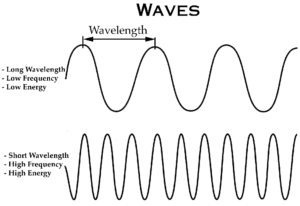
On this electromagnetic spectrum, radio waves have both the longest wavelengths and the lowest frequencies, which makes them slow and steady, the long-distance runners of the bunch. However, when we’re being bombarded from all directions with FM and AM radio waves, cell phone signals, WiFi signals, and more, can all of these signals share the same space? They do this by sharing specific bands in the radio wave spectrum, and these include:
| Name | Abbreviation | Frequency | Wavelength |
| Extremely low-frequency | ELF | 3–30 Hz | 105–104 km |
| Super low-frequency | SLEF | 30–300 Hz | 104–103 km |
| Ultra low-frequency | ULF | 300–3000 Hz | 103–100 km |
| Very low-frequency | VLF | 3–30 kHz | 100–10 km |
| Low-frequency | LF | 30–300 kHz | 10–1 km |
| Medium frequency | MF | 300 kHz – 3 MHz | 1 km – 100 m |
| High-frequency | HAF | 3–30 MHz | 100–10 m |
| Very high-frequency | VHF | 30–300 MHz | 10–1 m |
| Ultra high-frequency | UHF | 300 MHz – 3 GHz | 1 m – 10 cm |
| Super high-frequency | SHF | 3–30 GHz | 10–1 cm |
| Extremely high-frequency | EHF | 30–300 GHz | 1 cm – 1 mm |
| Tremendously high-frequency | THF | 300 GHz – 3 THz | 1 mm – 0.1 mm |
The ultra-high frequency (UHF) band has a frequency between 300 megahertz (MHz) and 3 gigahertz (GHz). You’ll find the UHF band used for specific technologies like WiFi, Bluetooth, GPS, walkie-talkies, and more. On the flip side, you’ll find very low frequency (VLF) in the 3 – 30 hertz range and this band is reserved exclusively for government radio stations, secure military communications, and submarines. The United States publishes an annual Radio Spectrum Frequency Allocation chart that shows how all of these radio services are allocated per frequency.
Now you might be wondering, how exactly do those radio waves in their particular frequencies get from place to place? The magic of being able to talk with someone on your smartphone halfway around the world boils down to some very simple principles. Every radio, whether it’s a traditional AM/FM radio or a radio found in a smartphone, uses the same basic method of transmitting information with the help of both a transmitter and a receiver.
A transmitter, as its name implies, transmits information through the air in the form of a sine wave. This wave goes flying through the air, eventually being caught by a receiver, which decodes the information within the sine wave to extract the stuff we want, like music, a human voice, or some other bit of data.
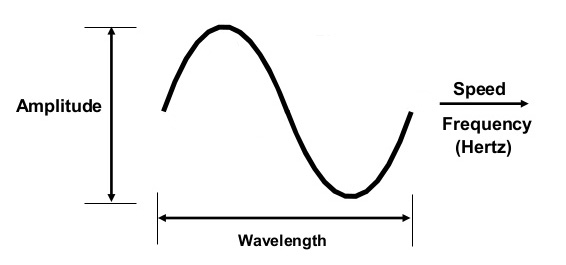
What’s interesting is that a sine wave alone doesn’t contain any of the data that we need, it’s basically an empty signal. This is why we need to take this sine wave and modulate it, which is the process of adding another layer of useful information. There are three methods of modulation, including:
In this method, you are turning a sine wave on and off, which will send bits of a signal in separate chunks. Ever heard of Morse Code to send distress signals? It uses pulse modulation.
This method is used in both AM radio stations and those old analog TV signals. Here, a sine wave is overlaid with another wave of information, like a person’s voice. Embedding another layer of information in this wave will create a fluctuation in the amplitude of the original sine wave, which can create static.
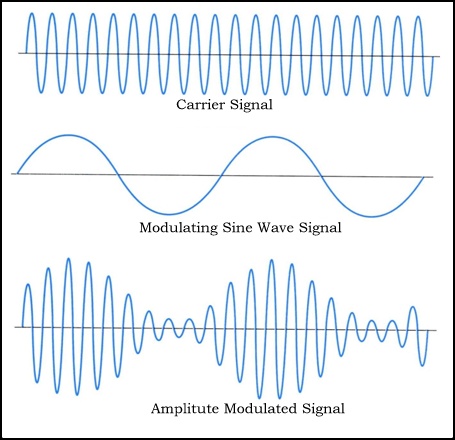
This method is used by FM radio stations and virtually every other wireless technology out there. Unlike amplitude modulation, which creates some significant fluctuations in a sine wave, frequency modulation changes a sine wave very little, which has the added benefit of resulting in less static.

Once all of those modulated sine waves are sent via a transmitter and received by a receiver, the wave of information that we embedded gets extracted, allowing us to do with it as we please, like play it as audio through a speaker, or view it as video on a television screen.
In our explanations above about modulation, transmitters, and receivers, you might think that sending a radio wave is a simple process of travel from point A to point B, but this isn’t always the case. Waves don’t always fly through the thin air straight from a transmitter to a receiver, and how they travel ultimately depends on what kind of wave frequency you want to send and when. There are three ways this journey can happen, including:
With this method of travel, radio waves are sent as a simple beam of light from point A to point B. This method was commonly used in old-fashioned telephone networks that had to transmit calls over a long distance between two massive communication towers.
You can also send radio waves along the curvature of the earth’s surface in the form of a ground wave. You’ll find AM radio waves traveling in this manner for short to medium distances, which is why you can still hear radio signals even when there isn’t a transmitter and receiver in your line of sight.
Last, you can also send radio waves straight up into the sky, which ends up bouncing off of the earth’s ionosphere, which is an electrically charged part of the atmosphere. When you do this, the radio waves will hit the ionosphere, bounce back down to earth, and bounce back up again. This is the process of mirroring a wave, bouncing it back and forth to its final destination.
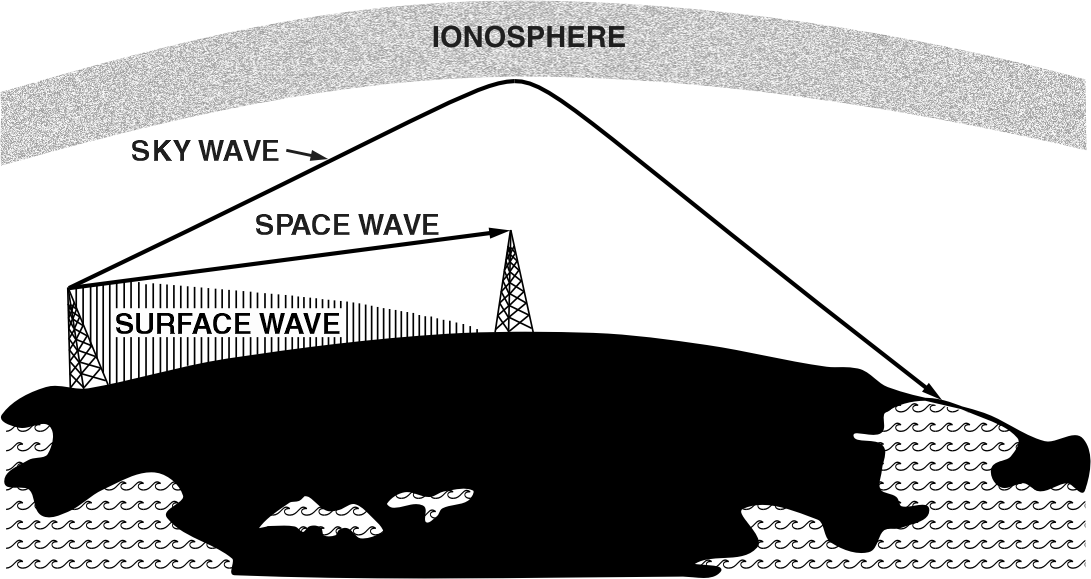
At this point we’ve gathered several things about radio waves, namely that they travel at very specific frequencies, they communicate with both a transmitter and receiver, and they can travel in a variety of ways across the earth. But with all of the different radio frequencies floating about, how does your smartphone or car radio know which particular frequency to receive, and which ones to ignore? This is where antennas come into play.
Antennas come in a bunch of different shapes and sizes, but they’re all designed for the same purpose – to pick up a very specific radio wave frequency. You’ll find antennas ranging from the long metal wires sticking out from an FM radio to something rounder like a satellite dish, or even a tightly tuned piece of copper on a PCB. In a transmitter, antennas are used to send radio waves, and in receivers, they’ll be used to pick up on a radio frequency. Antennas all have distinct features that they’re measured by, including:
For some antenna types, such as a dipole, the antenna has to be mounted in the proper direction, facing the direction of the radio wave transmission. Some antenna types, like those found in an FM radio, don’t need to be oriented in a specific direction and can capture radio wave signals from any angle.
The gain of an antenna describes how much it is going to boost a signal. For example, if you turn on an old analog TV, then you’ll still likely get a picture, just a fuzzy one. This is because of the metal case and components in the TV act as an antenna. But plug an actual directional antenna in, and you’ll be able to boost the signal, and gain a better picture. The bigger the gain, measured in decibels (dB), the better the reception you’ll get.
Last, an antenna’s bandwidth is its particular range of useful frequencies. The higher the bandwidth, the more radio waves that it can pick up. This is ideal for televisions as it allows them to get more channels. But for things like your smartphone which only needs a specific radio wave, a full bandwidth isn’t as necessary.
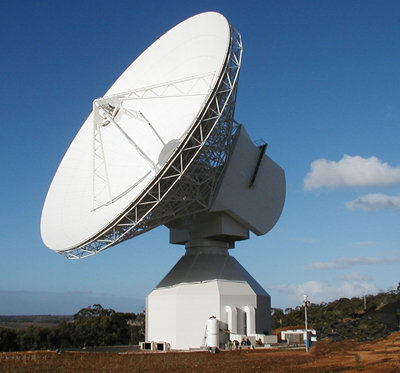
Radio waves are everywhere! Imagine if you could see them with your very own eyes. You’d have radio waves all over the place, beaming out of your router, from your phone, and all around you.
Radio waves have indeed shaped our modern lives like nothing else, and without them, we would never get to enjoy such useful inventions as GPS, WiFi, Bluetooth, and more. But radio extends far beyond our physical, earthly existence. Some of the furthest reaches of our known universe have been explored through radio astronomy to discover quasars, molecules, and even other galaxies.
We hope you enjoyed this guide to how radio waves work. Are you ready to get started with your own wireless electronics project? Try Autodesk Fusion electronics today.
By clicking subscribe, I agree to receive the Fusion newsletter and acknowledge the Autodesk Privacy Statement.
Success!
May we collect and use your data?
Learn more about the Third Party Services we use and our Privacy Statement.May we collect and use your data to tailor your experience?
Explore the benefits of a customized experience by managing your privacy settings for this site or visit our Privacy Statement to learn more about your options.